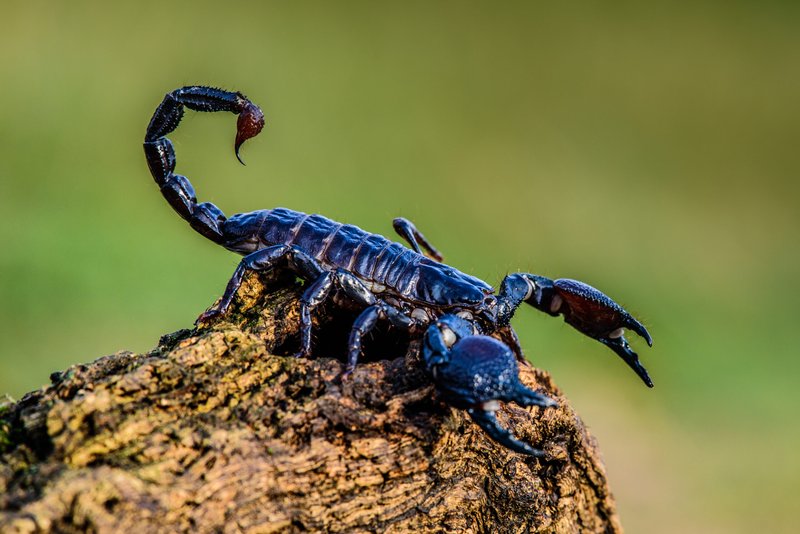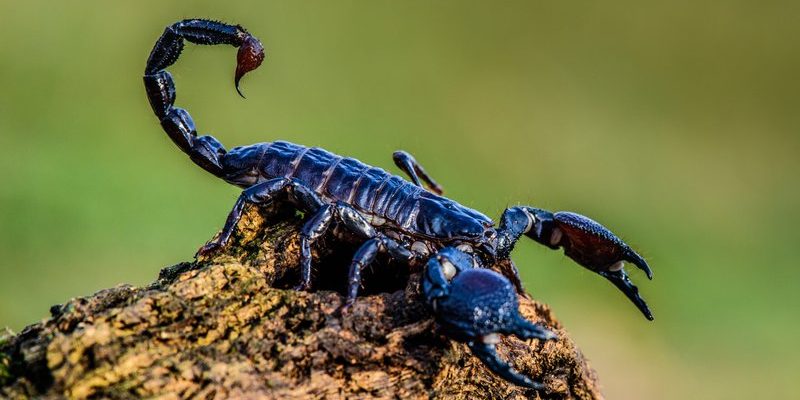
These remarkable arachnids are not just hiding in the shadows; they have specific habitats that suit their lifestyle. Whether you’re a curious nature lover or simply someone who’s stumbled upon a scorpion documentary and got hooked, it’s interesting to learn about what makes their homes tick. Let’s dive into the various environments where emperor scorpions can be found and what that means for their survival and behavior.
Natural Habitats of the Emperor Scorpion
Emperor scorpions are primarily found in the tropical regions of West Africa. They prefer warm climates that provide the right amount of humidity. Picture a lush landscape with patches of forest and open ground. These areas are perfect because they offer shelter and food. You might wonder why they need both—well, shelter protects them from predators and harsh weather, while food sources, like insects, keep them healthy.
In the wild, these scorpions make their homes in burrows and crevices. They dig into the ground or find cracks in rocks to hide during the day. This way, they can stay cool and avoid the sun’s harsh rays. At night, they emerge to hunt, showcasing their stunning features under the moonlight.
Ecological Importance of Their Habitat
The habitats of emperor scorpions play a vital role in their ecosystem. By digging burrows, they aerate the soil, allowing better water penetration for plants. Plus, they help control insect populations, which can be beneficial for the local flora and fauna. It’s a classic case of nature maintaining balance, and these scorpions are crucial players in this drama.
It’s also interesting to note how their habitats impact their behavior. In areas where the soil is too sandy or dry, you won’t find them hanging around. They thrive in slightly moist environments, which influence their daily activities and survival strategies.
Countries Where Emperor Scorpions Are Found
You might be curious about which specific countries are home to these fascinating creatures. The emperor scorpion is primarily distributed across several countries in West Africa. Countries such as Ghana, Nigeria, and Cameroon are well-known for having vibrant populations of these scorpions.
Each location offers its unique combination of vegetation and climate, which helps support the emperor scorpion’s lifestyle. For example, in Ghana, the mixture of rainforest and savanna creates diverse environments that the scorpions can use for various purposes, from hunting to hiding.
Knowing where these scorpions are found helps us understand the complexity of their ecosystems. Some regions may face challenges due to climate change, which can alter the availability of food and suitable habitats.
Role of Climate and Weather
Climate has a significant impact on where emperor scorpions can thrive. They prefer warm temperatures ranging between 24–30 degrees Celsius (75–86 degrees Fahrenheit). Too much cold or extreme dryness can drive them away or lead to reduced numbers.
During the rainy season, their habitats become rich in insect life, which is like a buffet for these scorpions. Conversely, during droughts, food becomes scarce, and they might have to move to find better conditions. Their ability to adapt to changing weather patterns is critical for their survival.
Emperor Scorpions in Captivity
Interestingly, emperor scorpions aren’t just found in the wild. They’re also popular in the pet trade! Many enthusiasts and reptile keepers love having these stunning creatures as pets. But, of course, keeping them means creating a habitat that mimics their natural environment.
In captivity, they typically need a terrarium that maintains humidity and warmth, ideally replicating the tropical climates they’re used to. The substrate should be deep enough for them to dig and create burrows, and there should be plenty of hiding spots using rocks or logs. It’s quite the task to recreate their natural home, but for many, the effort is well worth it.
Considering how they thrive in captivity shines a light on their needs and helps people appreciate their unique behaviors. However, keeping them as pets should always be done responsibly, ensuring that they’re cared for well.
Impact of Captivity on Their Behavior
Keeping emperor scorpions in captivity can alter their natural behaviors. In the wild, these critters are opportunistic hunters, exploring their environment at night. But in a terrarium, they may become less active due to limited space and availability of prey. Understanding their natural instincts is key to ensuring they lead a fulfilling life in captivity.
Many enthusiasts have found that providing a diverse and engaging habitat significantly improves the scorpions’ activity levels and overall health. It’s a rewarding challenge for anyone interested in these intriguing arachnids.
Conservation and Habitat Protection
As with many creatures, emperor scorpions face threats in their natural habitats. Deforestation, urbanization, and climate change are significant issues that jeopardize their survival. Protecting their environments is crucial not just for them, but for the ecosystems that rely on their presence.
Conservation efforts involve preserving the forests and wetlands of West Africa. By maintaining these habitats, we ensure that not only emperor scorpions but countless other species can thrive. It’s a classic example of how everything in nature is connected.
Advocacy for sustainable practices can help mitigate these threats. Supporting local initiatives that focus on habitat preservation can make a significant difference. When we buy sustainable products or engage in conservation efforts, we play our part in protecting these amazing creatures.
The Role of Education in Conservation
Education is vital in conservation efforts. The more people know about emperor scorpions and their habitats, the better they can advocate for their protection. Schools, wildlife programs, and documentaries can bring attention to the importance of these arachnids. After all, when people understand and appreciate these creatures, they’re more likely to support efforts aimed at preserving their homes.
By fostering a sense of curiosity and respect for nature, we can encourage more people to take action. You might find it surprising how one person’s curiosity can lead to broader awareness and make a practical impact.
The Fascinating Behavior of Emperor Scorpions
Understanding where emperor scorpions thrive leads us to explore their behavior. These creatures are truly fascinating, displaying a range of interesting behaviors largely influenced by their habitats. They are not just hiding in the shadows; their movements and habits reflect their adaptations to the environments they inhabit.
For instance, the nighttime hunts of the emperor scorpion are compelling to observe. They can sense their prey through vibrations and chemical signals in the air. This makes them highly skilled predators, perfectly adapted to their surroundings.
Additionally, communication among emperor scorpions involves body language and pheromones. They can express their feelings—whether it’s to attract a mate or warn off potential threats—through subtle movements or scents. Each little nuance adds depth to their existence, making the study of their behavior all the more rewarding.
Interactions with Other Species
Emperor scorpions don’t exist in a vacuum. They interact with a variety of other species in their ecosystems. From predators to prey, their survival relies on understanding these relationships. For instance, birds, mammals, and even other scorpions can pose threats to their safety.
However, they also play the role of predator. By keeping insect populations in check, they help maintain the balance in their environment. It’s a classic dance of survival that plays out in the wild, showcasing the intricate connections between all living things.
Wrap-Up
In summary, emperor scorpions are incredible arachnids that call the warm, tropical regions of West Africa their home. Their habitats are a blend of moist, forested areas and open grounds, which provide the perfect conditions for their survival. Whether lurking in burrows or thriving in captivity, these fascinating creatures remind us of the beauty and complexity of nature.
As we learn about their habitats and behaviors, it becomes clear just how important it is to protect these environments. Every small effort counts, whether it’s supporting conservation initiatives or simply educating ourselves and others about these unique creatures. So, the next time you think about where emperor scorpions are found, remember that their homes are vital to their survival—and to our world.

